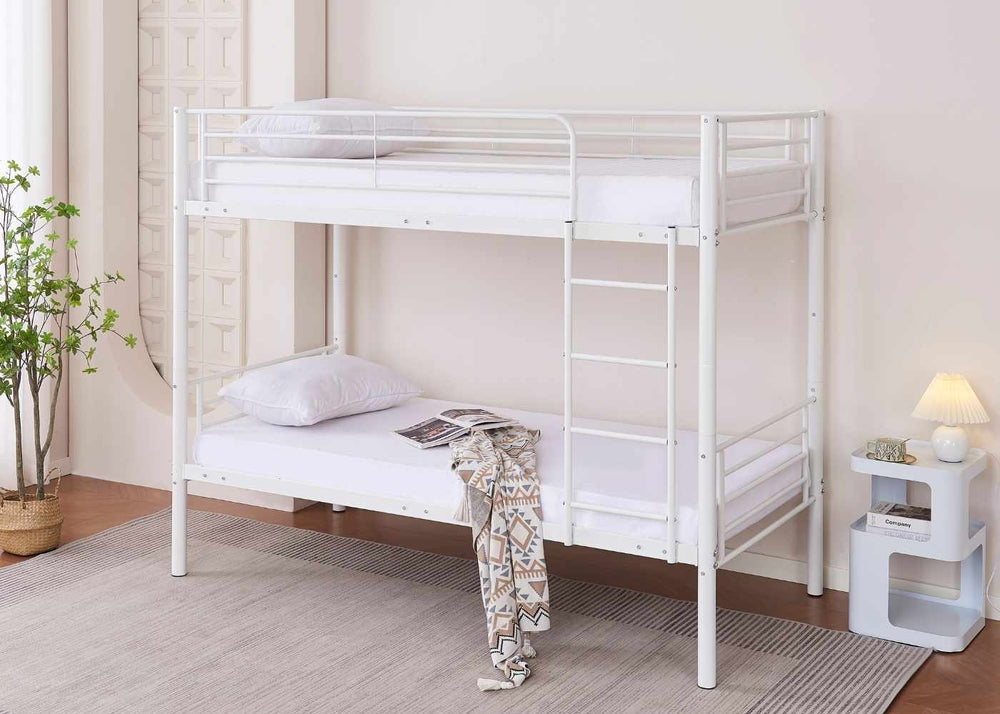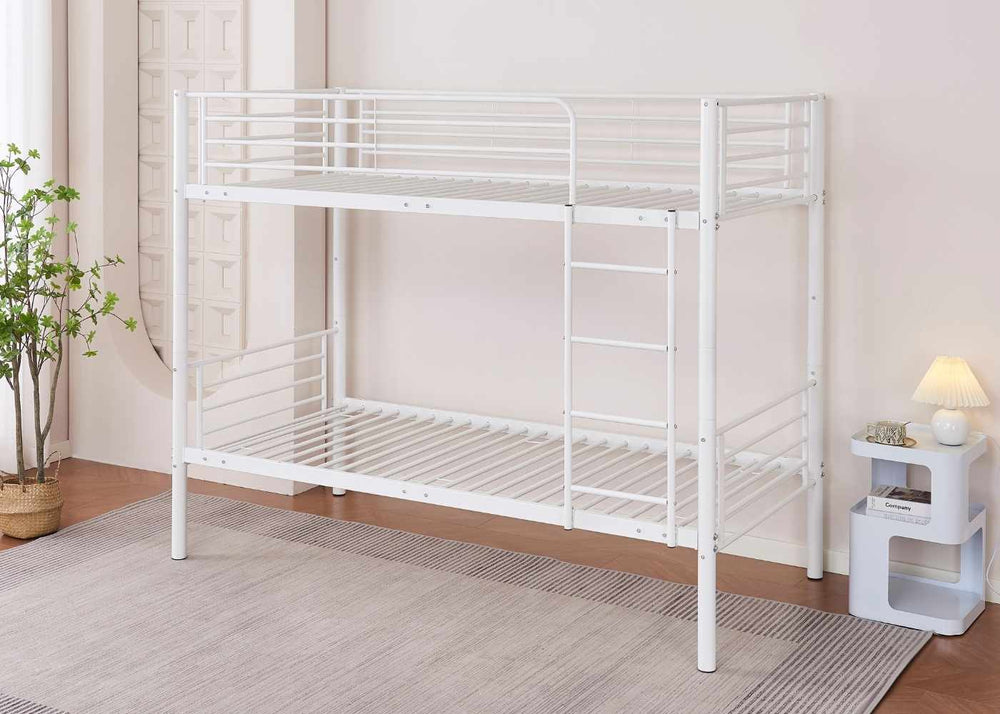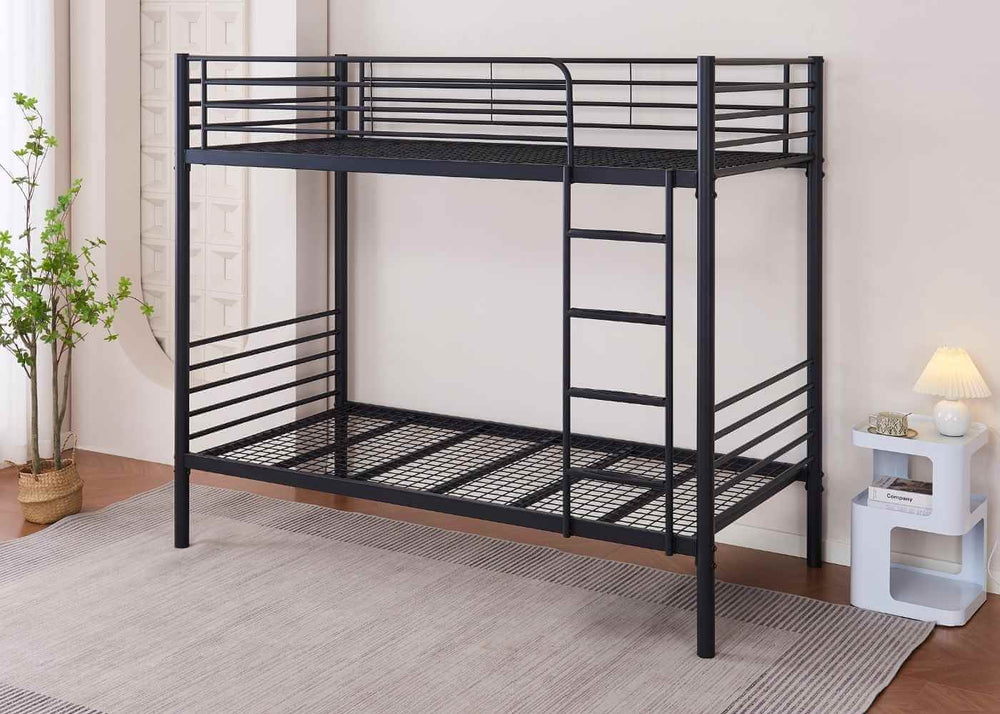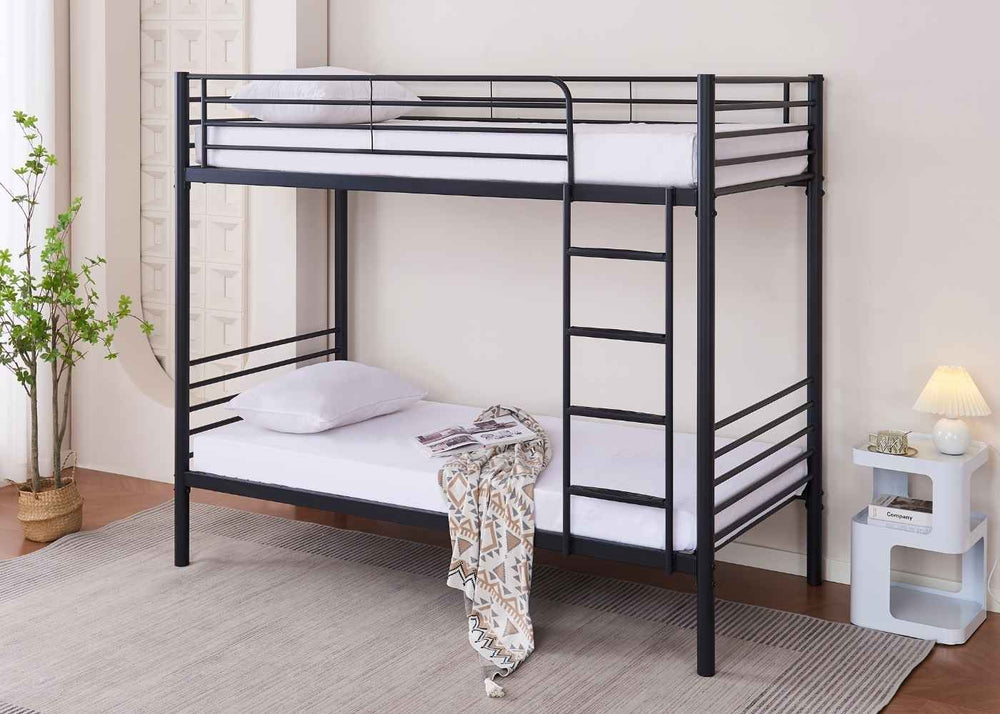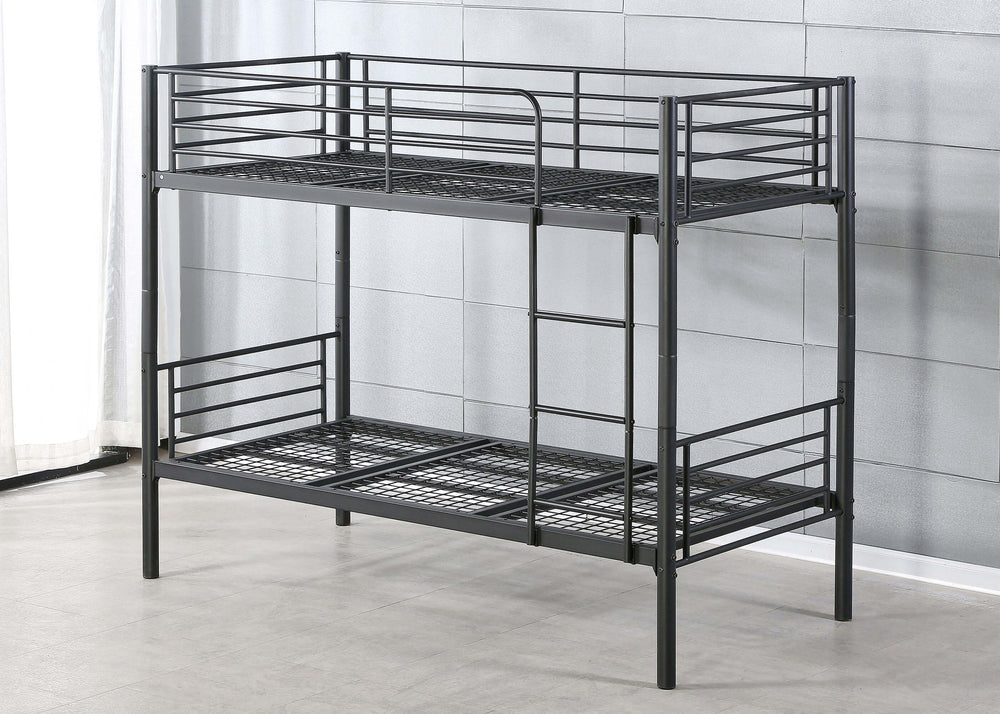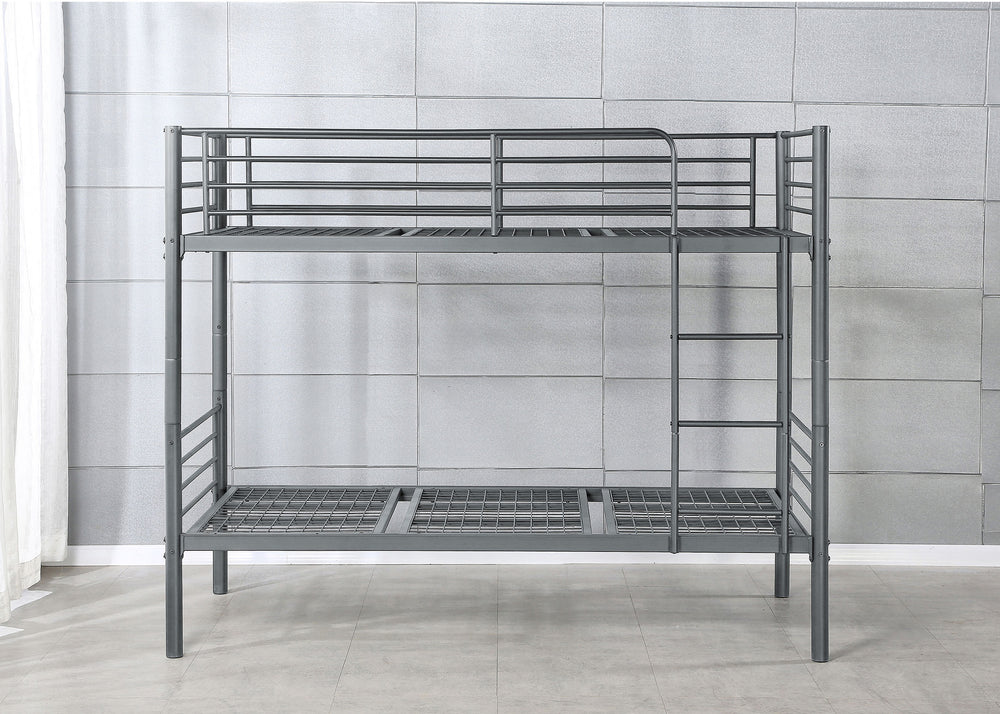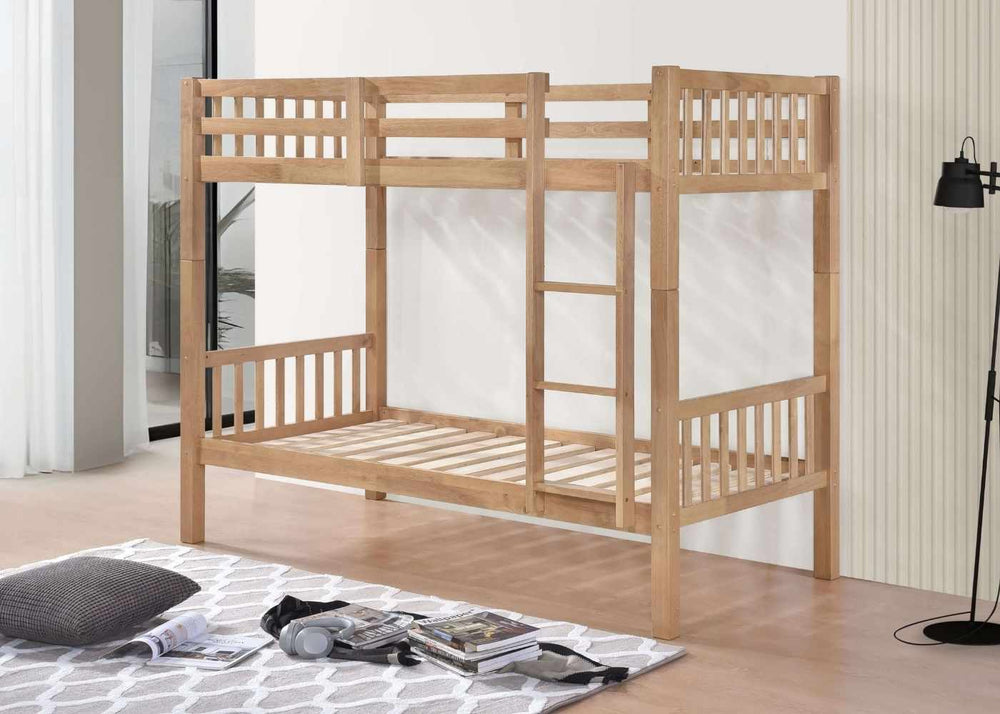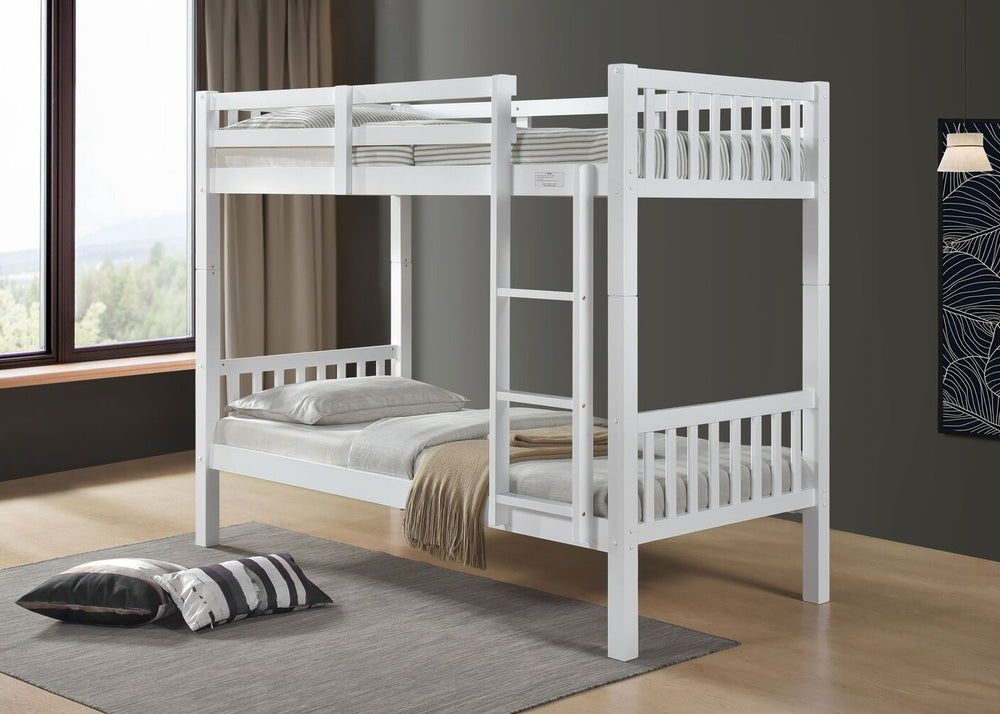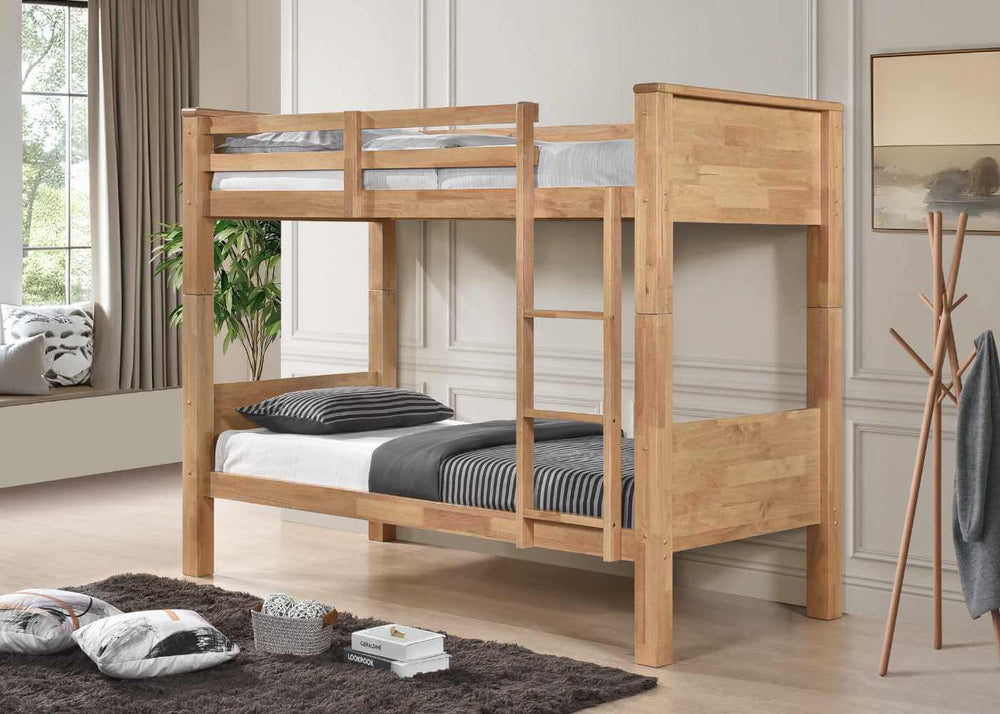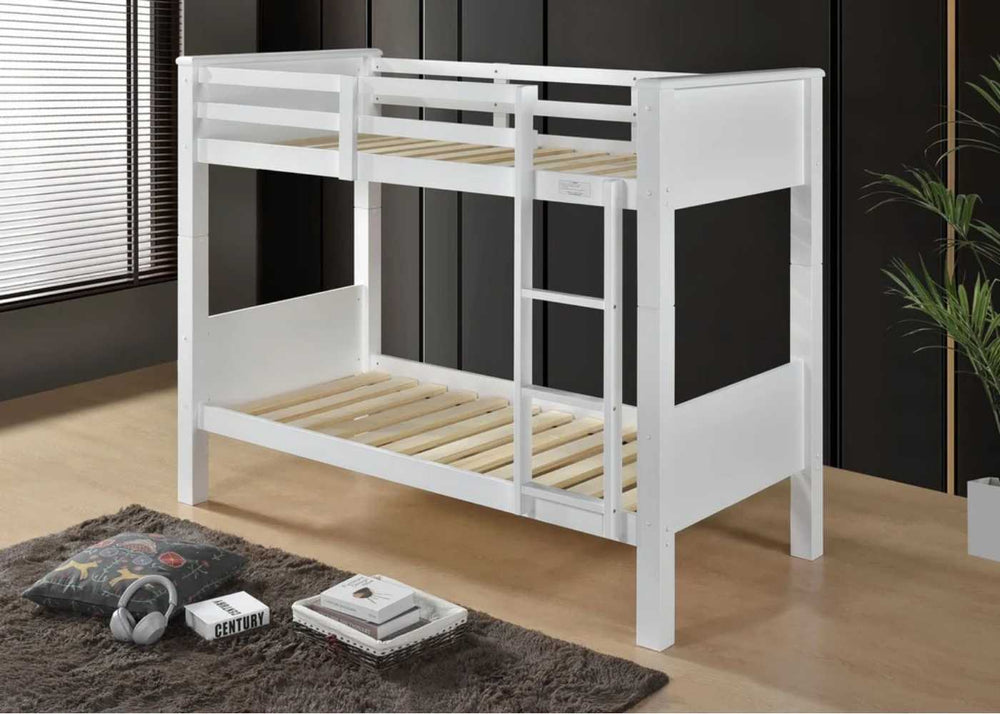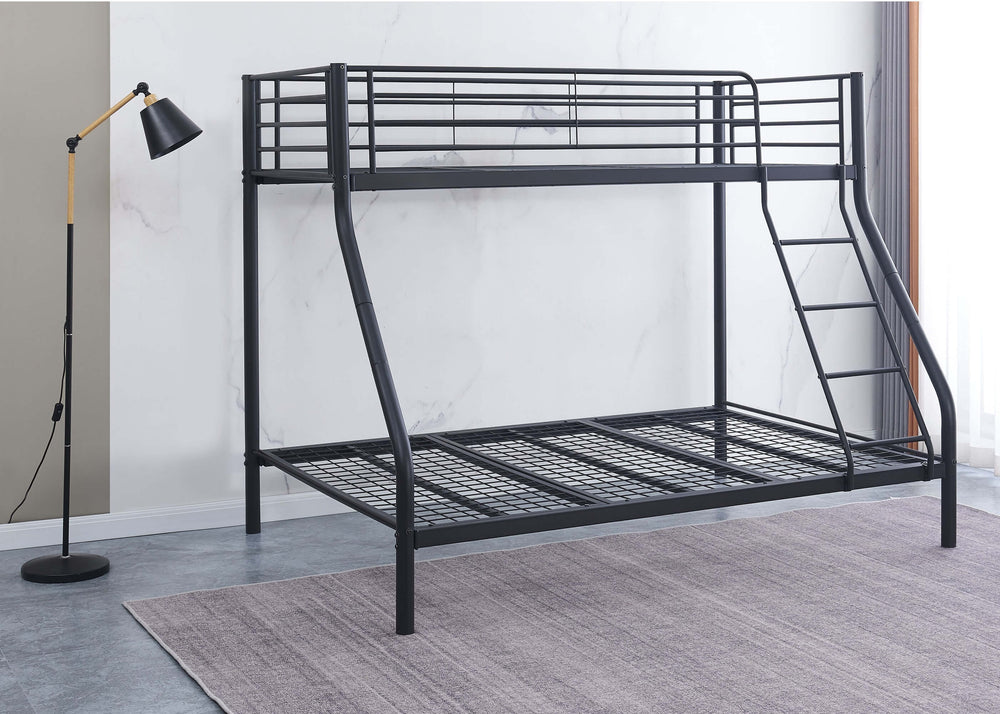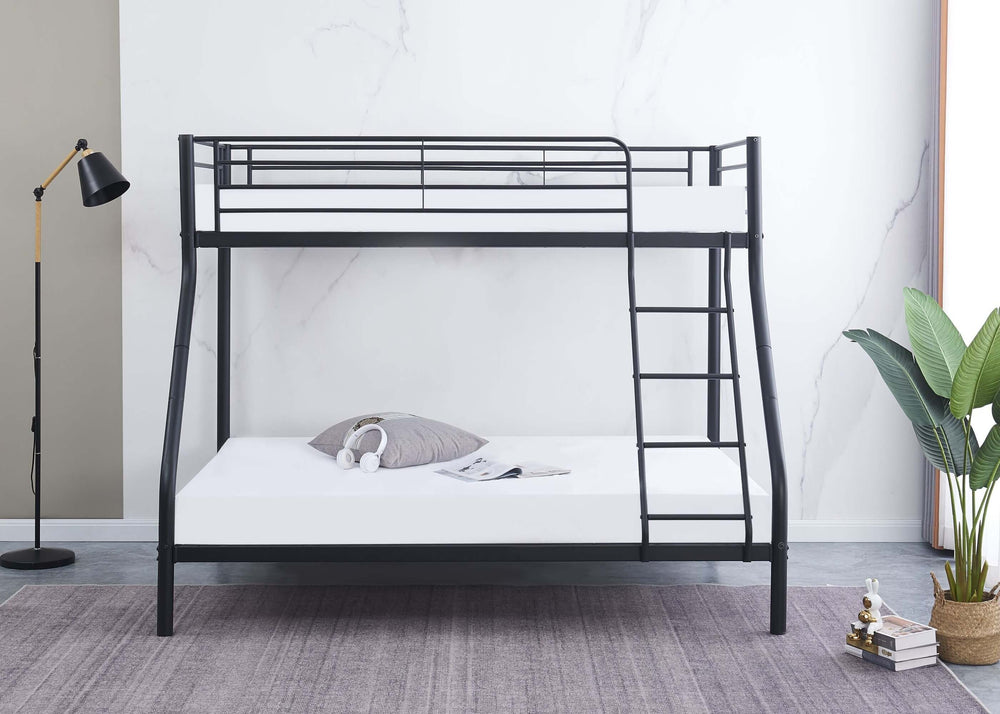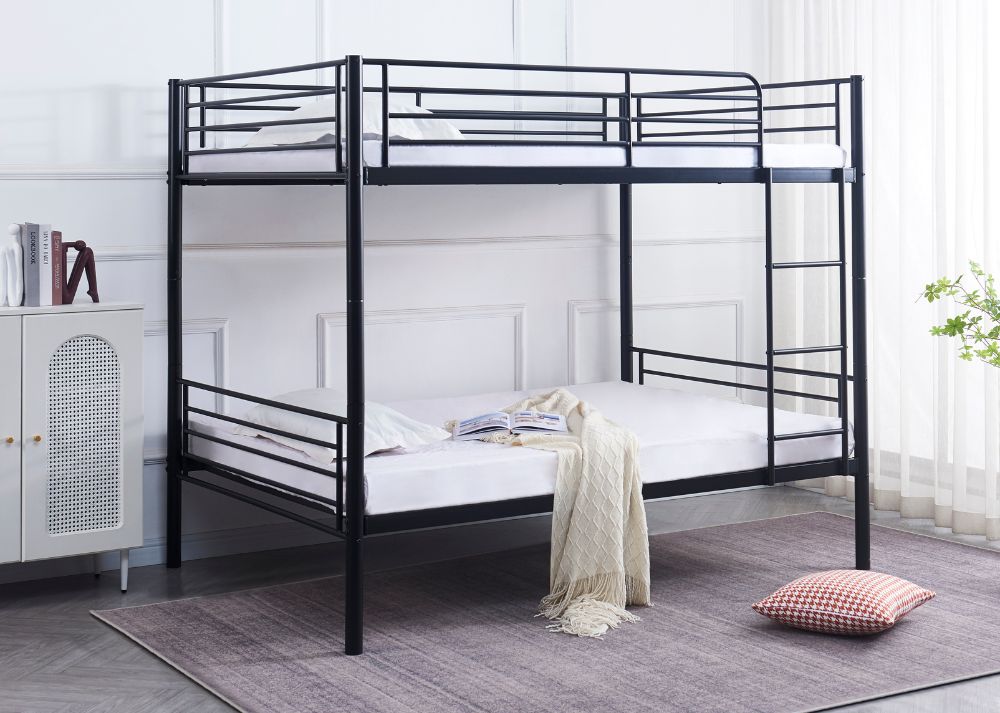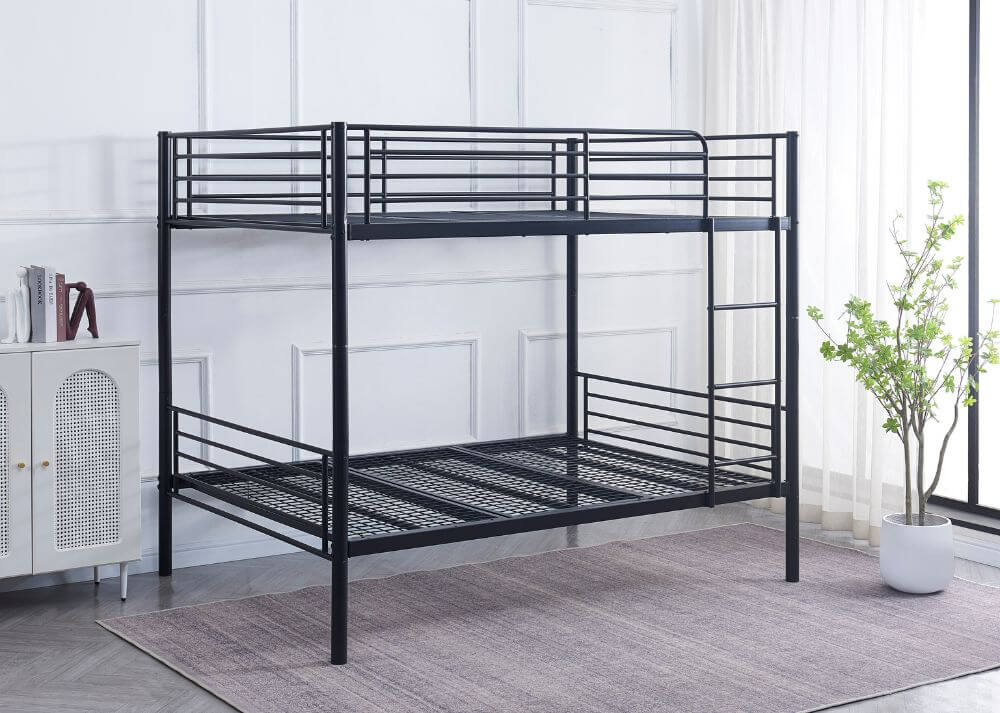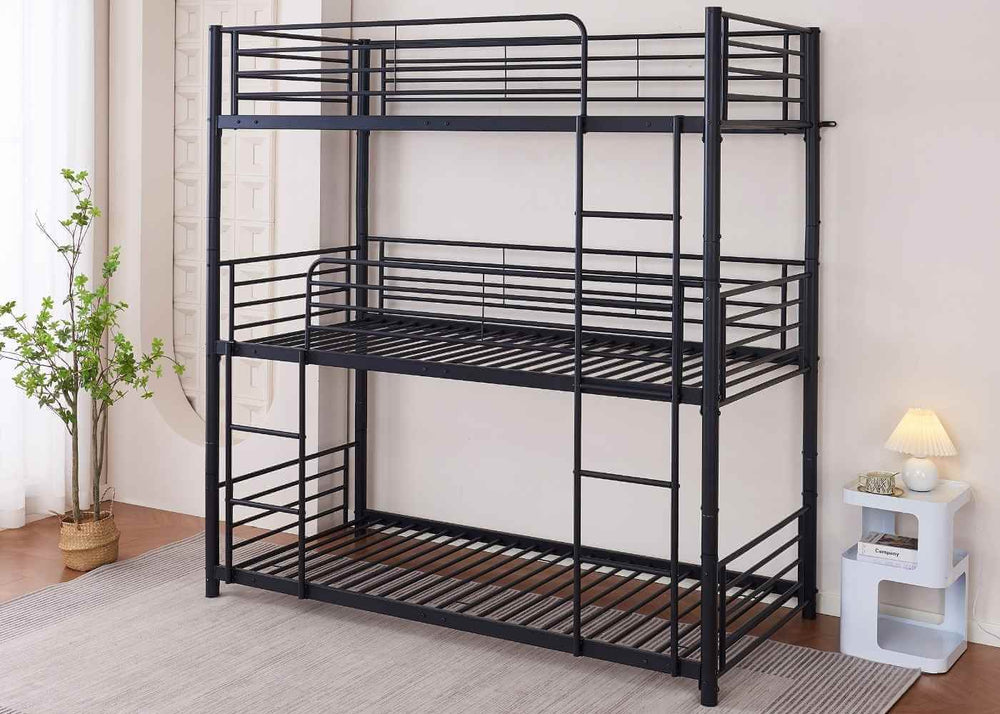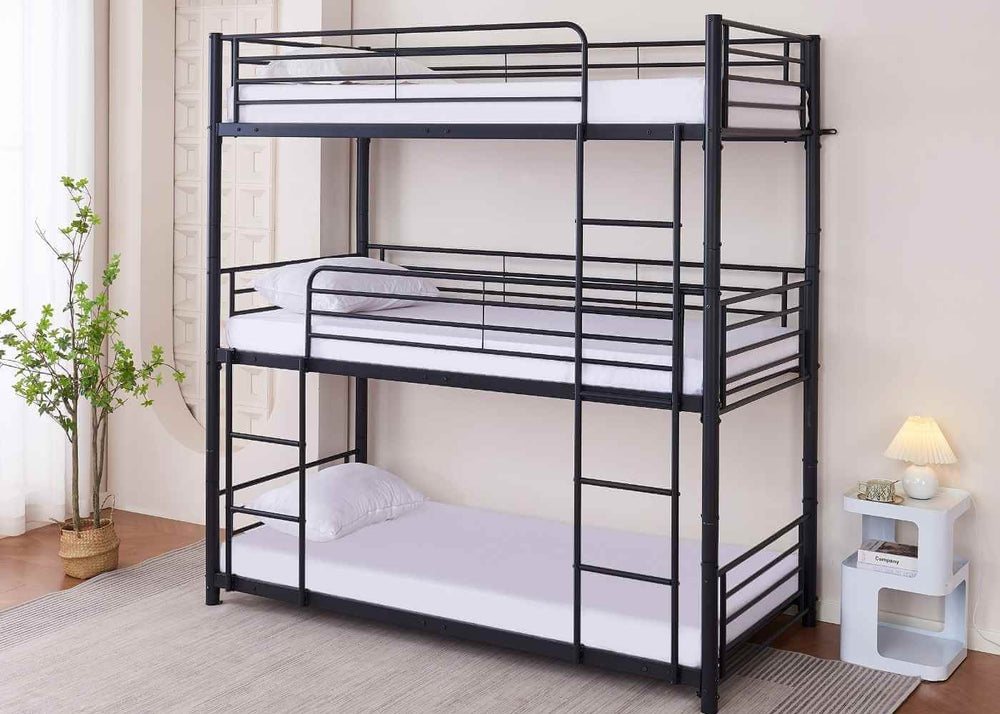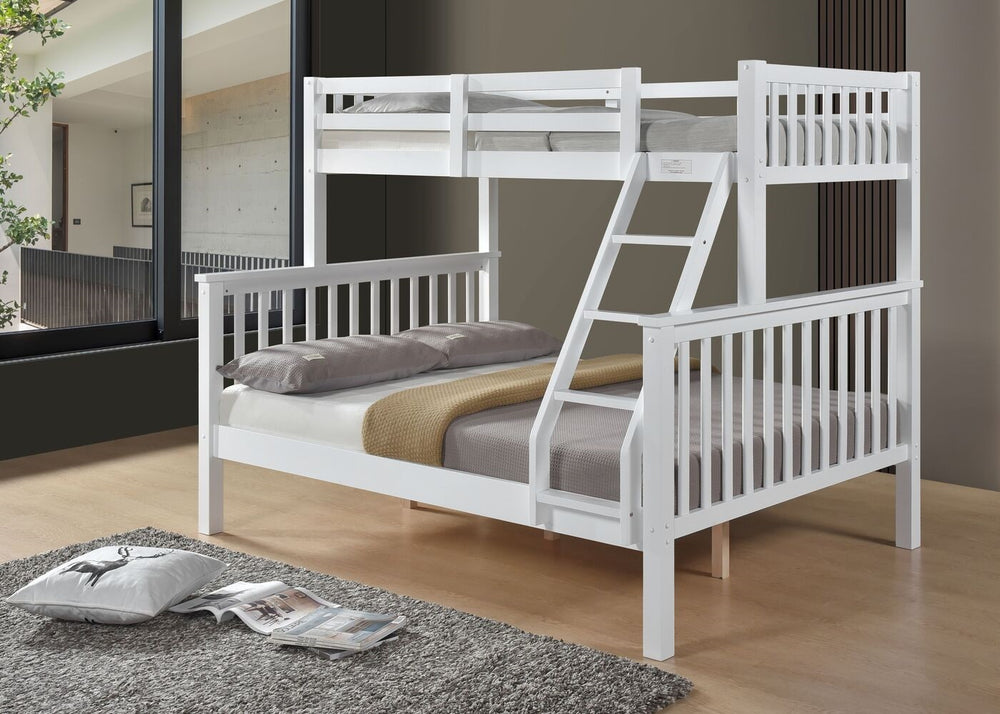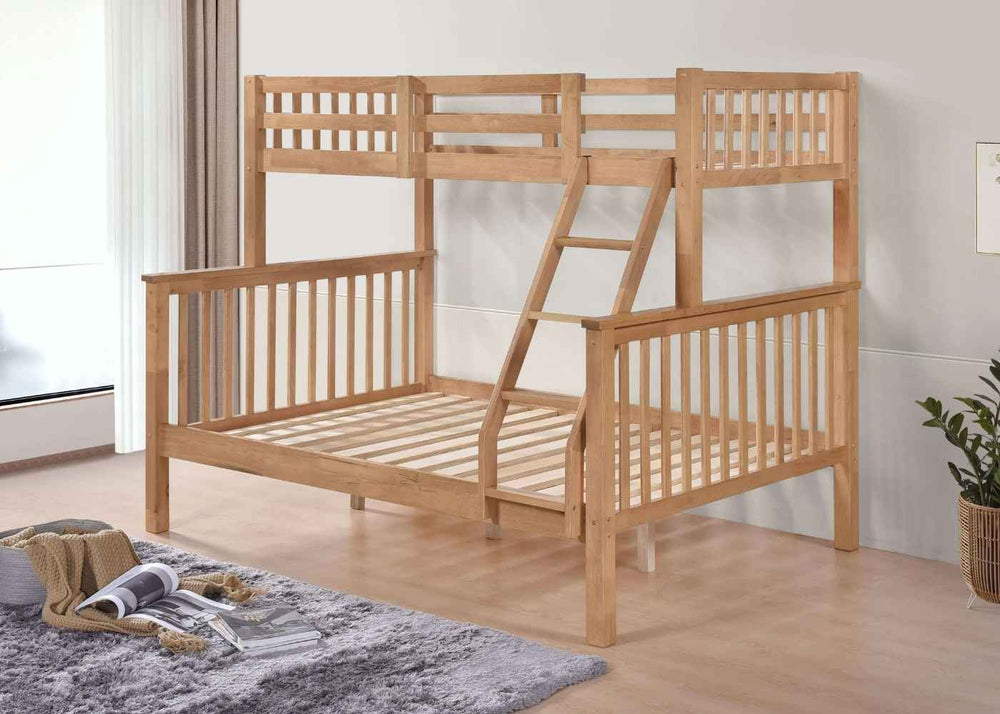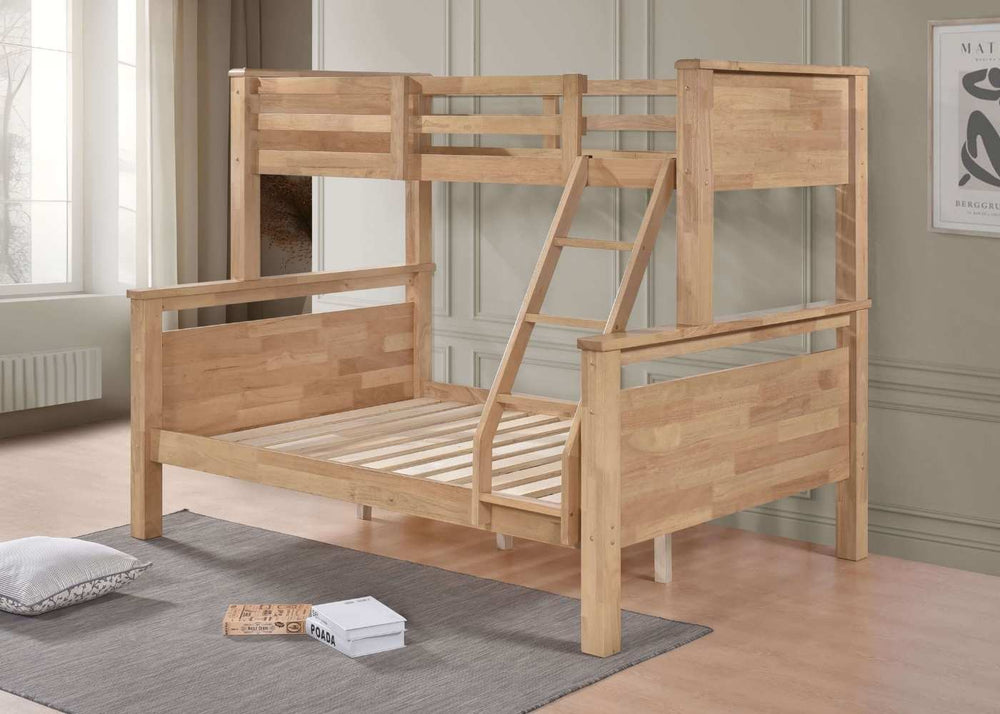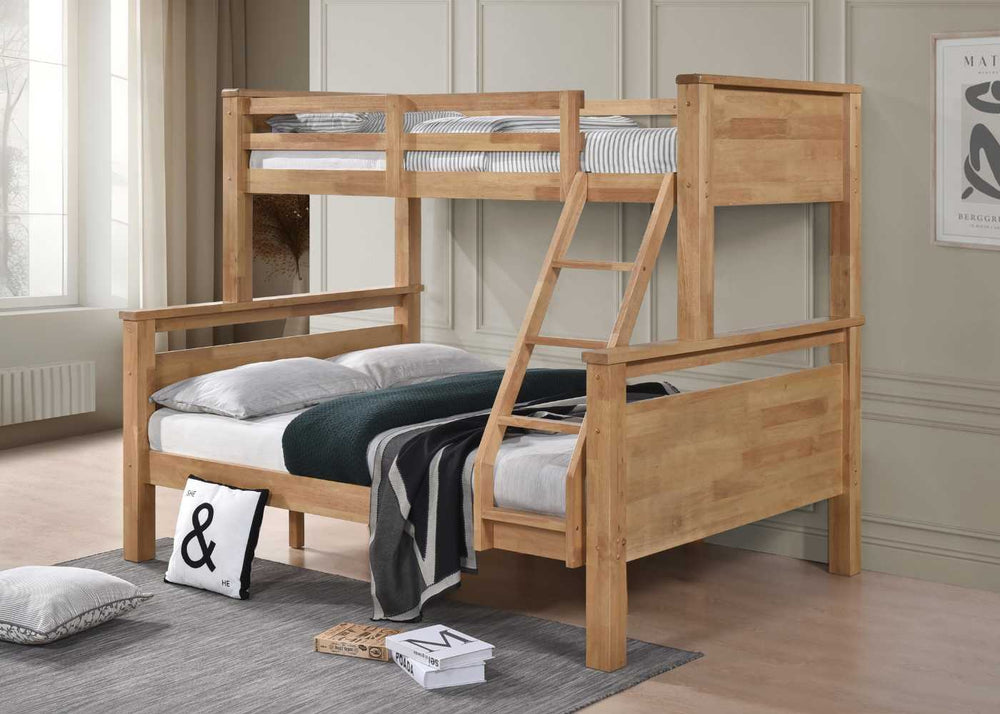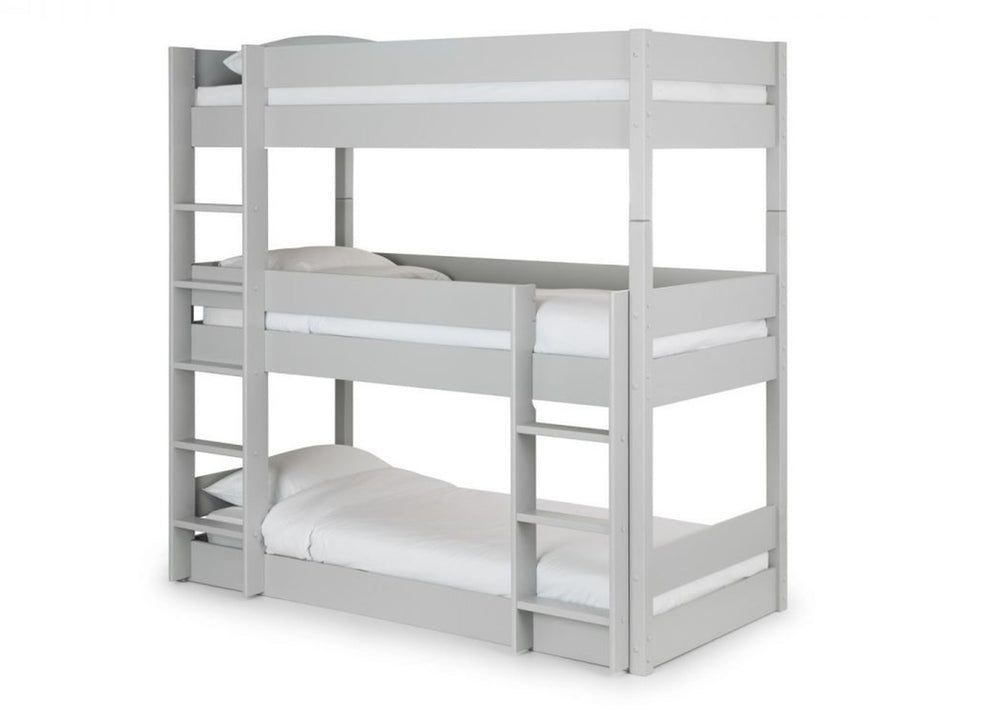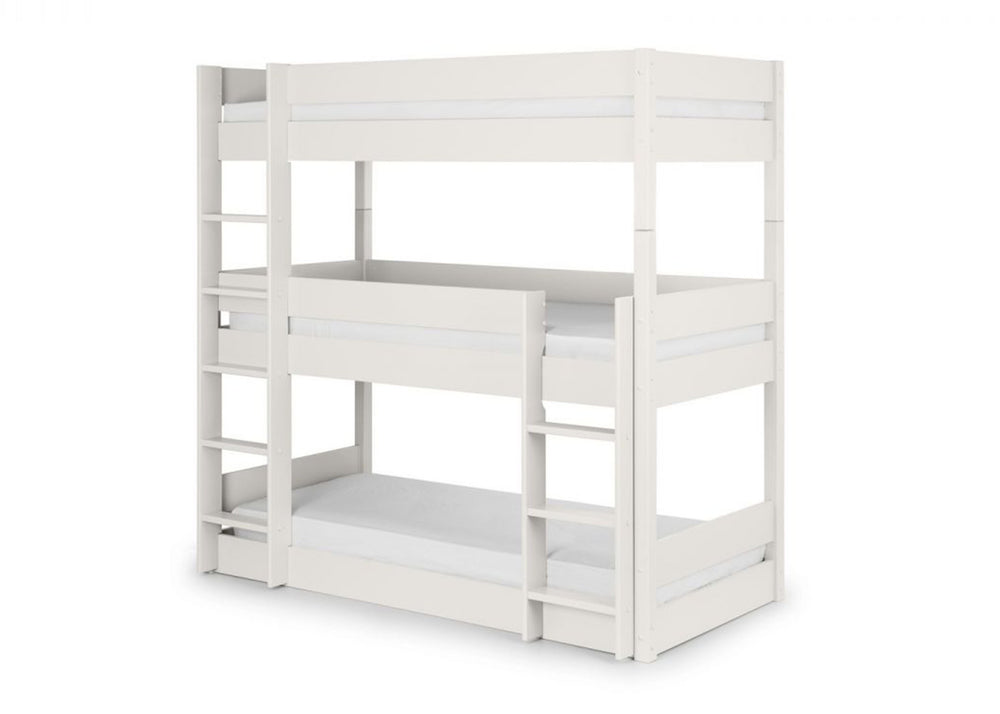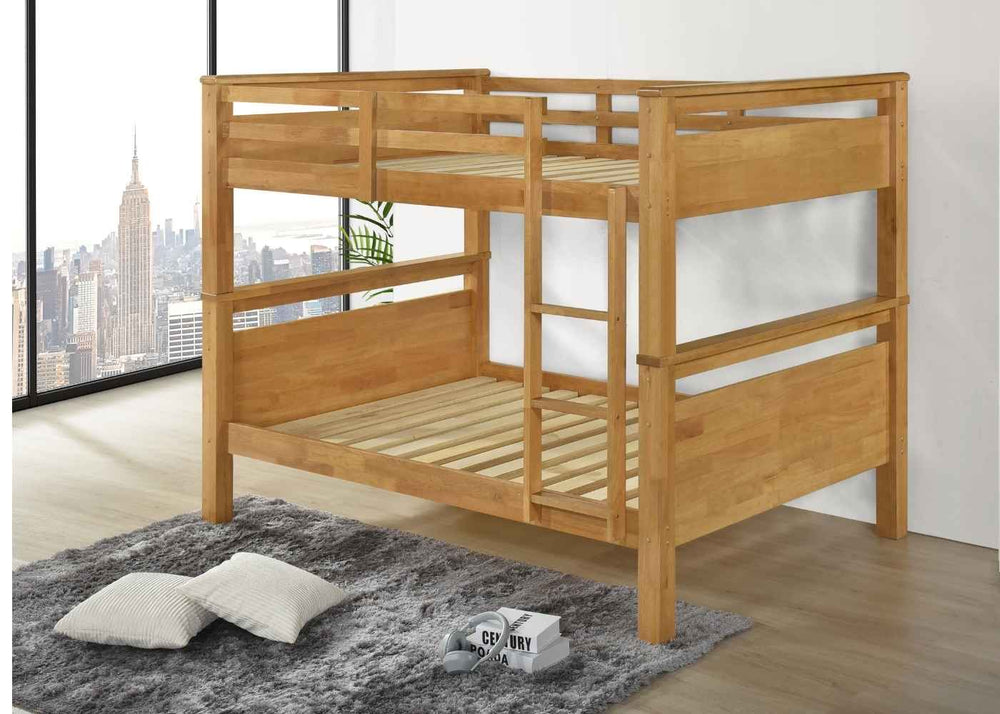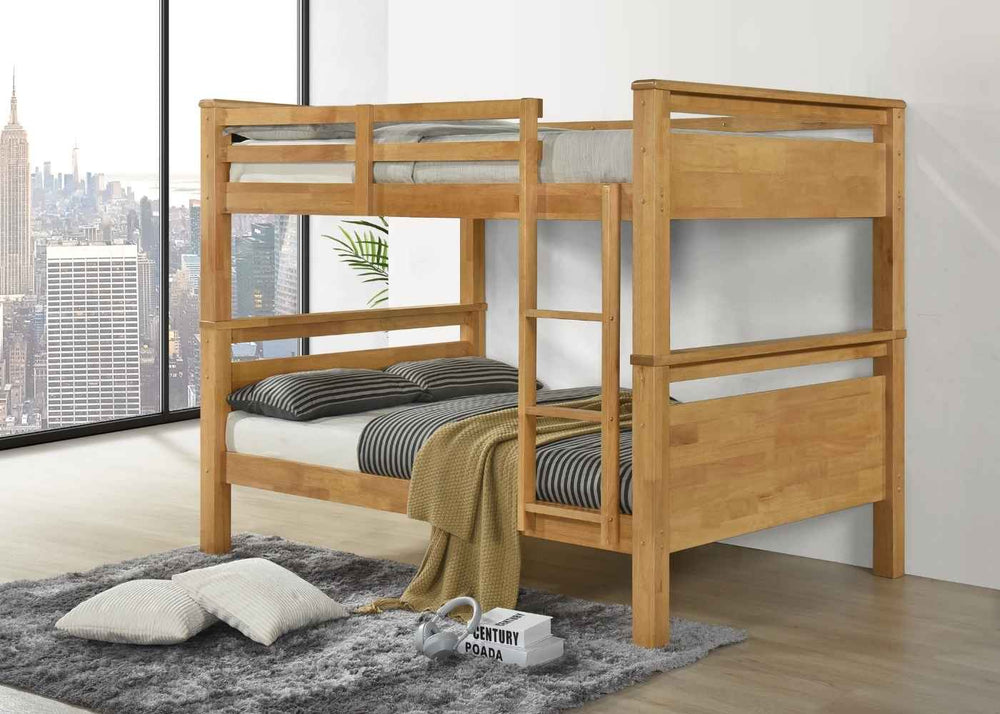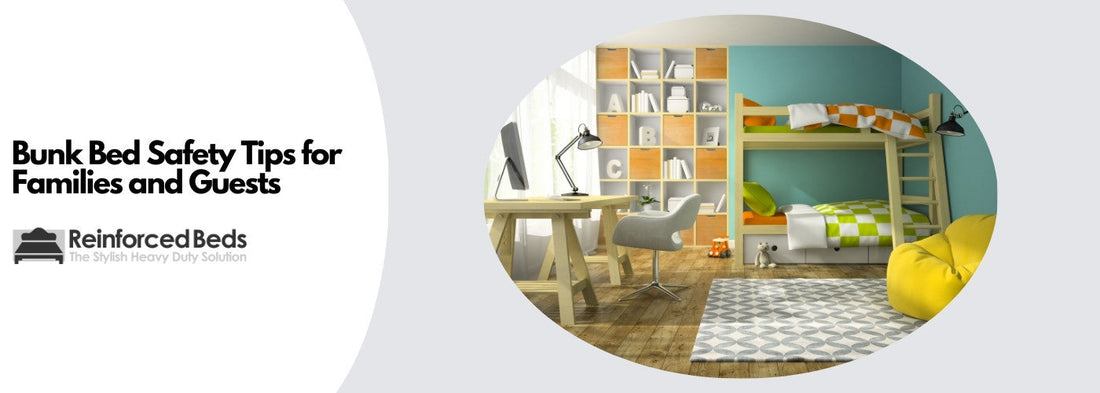
Bunk beds are a practical and popular way to maximise space in shared bedrooms, guest rooms, and family homes. But while they offer convenience and versatility, ensuring they’re used safely is essential—especially when children or young guests are involved.
Modern bunk beds are built with improved safety standards and durable materials, but the real difference lies in how they’re set up and used. From mattress height to ladder design, small decisions can make a big impact on daily safety and peace of mind.
In this post, we’ll explore simple, effective ways to make bunk beds safer for everyone. Whether you're preparing a child’s room, a vacation let, or a sleepover setup, these tips will help you create a safer sleep environment without sacrificing comfort or style. We also answer the question, are bunk beds safe for adults?
If you're still looking at bunk options, be sure to check out our Ultimate Guide to Choosing the Right Bunk Bed for Your Home for a complete guide to making the correct decision when choosing a bunk bed

Why Bunk Bed Safety Matters
Bunk beds are a staple in many homes, especially those with children or limited space. They’re a smart way to fit two or more sleepers into a single room and are often the go-to choice for siblings, sleepovers, or shared guest spaces. But their vertical design does introduce a few safety considerations that standard beds don’t.
The elevated top bunk presents potential risks if not used correctly—such as rolling out during sleep, slipping while climbing, or bumping into a ceiling that’s too low. Even the bottom bunk can pose issues if the frame is unstable or improperly assembled. A common source of injury comes from mismatched mattress heights that sit too high above guard rails, reducing their effectiveness.
Most of these issues are preventable with simple setup choices and regular safety checks. From positioning the bed away from hazards to ensuring ladders and rails are properly secured, a bit of upfront planning goes a long way. With the right precautions in place, bunk beds can be just as safe as any other sleep setup—and far more space-efficient.
If you're looking for broader safety guidance beyond sleepovers, our blog on Bunk Bed Safety Tips for Families and Guests offers helpful advice on how to keep everyone secure and comfortable from everyday use to occasional visitors.
Age-Appropriate Bunk Bed Use
While bunk beds are designed to be safe, it's important to follow age recommendations to minimise the risk of accidents. In the UK, it’s generally advised that children under the age of six do not sleep on the top bunk. Younger children often lack the coordination and awareness needed to climb up and down safely, especially at night or when unsupervised.
The lower bunk is typically suitable for younger children, provided the frame is sturdy and guard rails are in place where needed. It’s also important to supervise play around bunk beds and establish clear house rules—such as no jumping on the bed, no roughhousing on the ladder, and always using both hands when climbing.
Choosing a bunk bed with thoughtful safety features can go a long way in creating a safer environment. The Pentney Bunk Bed is a great example—it includes large, flat ladder steps with integrated grip sections for added stability, as well as built-in safety rails on the top bunk for secure sleeping. These design details provide extra peace of mind for families with young children starting to use a bunk bed for the first time.
Key Safety Features to Look For
Not all bunk beds are created equal when it comes to safety. Beyond basic structure, there are specific features to look for that can make a big difference in day-to-day use—especially in homes with children or multiple guests. Paying close attention to these elements can help reduce the risk of falls, injuries, or long-term wear that compromises stability.
- Guard Rails: The top bunk should have secure guard rails on all sides, even the side facing the wall. This prevents sleepers from rolling out, particularly during restless nights. The rails should be tall enough to rise well above the top of the mattress.
- Ladder Design: A fixed ladder is generally safer than a detachable or angled one. Look for wide, flat steps that are easier to grip and climb—especially for younger children. Rails or handholds at the top of the ladder offer added support when transitioning into bed.
- Mattress Fit: Using the right mattress height is essential. If the mattress is too thick, it can sit above the safety rail, reducing its effectiveness. Always check the recommended depth specified by the bed manufacturer.
- Stable Frame: A bunk bed should feel solid and secure, with no noticeable wobble or shifting. Joints should be bolted or reinforced, and slats should be evenly spaced to distribute weight evenly across the frame.
- Smooth Edges: Rounded corners and flush fittings help prevent scrapes or bruises. Check for any exposed bolts, splinters, or metal edges that could pose a hazard during use.
Smart Room Layout for Safer Use
A safe bunk bed setup doesn’t stop at the bed itself—the layout of the room plays an important role in reducing risk and ensuring comfortable, easy use. By taking the surrounding space into account, you can create a layout that promotes both safety and practicality.
To begin with, avoid placing the bunk bed directly under a ceiling fan or any low-hanging fixtures. Top bunk sleepers should have enough clearance to sit up without risk of bumping their head. A minimum of two feet between the top mattress and ceiling is a good rule of thumb.
Keep bunk beds away from windows, radiators, or curtain cords to avoid entanglement hazards and changes in room temperature affecting sleep. Positioning the bed against a solid wall offers extra stability and allows for better ladder access.
Leave plenty of floor space around the ladder or steps to ensure safe climbing—especially during night-time bathroom trips or early mornings when lighting is low. Consider placing a soft rug or carpet under the ladder area to cushion any potential slips.
Planning the room layout with these safety points in mind ensures the bunk bed integrates smoothly into the space while supporting day-to-day comfort and peace of mind.

Maintenance and Regular Safety Checks
Ensuring bunk bed safety doesn’t end once the bed is assembled—ongoing maintenance is essential to keep it secure and reliable. Over time, even the sturdiest bunk beds can experience wear from everyday use, especially in busy family homes or guest rooms with frequent turnover.
Make it a habit to inspect the bed every few months. Check all bolts, screws, and connection points to ensure they’re tight and properly aligned. Any movement in the joints can lead to instability over time, so it’s best to address even minor looseness early.
Replace any broken or cracked slats immediately, and keep an eye on guard rails and ladders for signs of damage. Wooden frames should be checked for warping or splintering, while metal beds should be monitored for rust, dents, or chipped finishes that may weaken structural integrity.
It's also a good idea to recheck the top bunk mattress height during routine bedding changes, especially if you rotate or replace mattresses. Ensuring the mattress stays within the recommended safety rail height helps maintain a secure sleeping environment over time.
Safe Sleepover Setups
Bunk beds are a go-to solution for sleepovers, offering extra sleeping space without the need for additional furniture. But when hosting children or guests who aren’t familiar with bunk beds, a few extra precautions can make overnight stays safer and more comfortable for everyone.
Start by providing a quick safety rundown—especially for younger guests. Explain how to use the ladder properly, point out the guard rails, and set simple rules like no jumping or climbing on the outside of the frame. If very young children are staying over, it’s best to reserve the lower bunk for them and leave the top bunk for older, more confident climbers.
A soft night light can make a big difference when it comes to navigating the ladder in the dark. Choose one with a warm glow placed near the ladder or hallway, so guests can find their way safely during the night.
For more ideas on how to create a fun and practical shared space, see our guide to bunk beds for sleepovers.
Conclusion
With the right setup and regular maintenance, bunk beds can be a safe and reliable part of any home or guest space. Whether you're furnishing a child's bedroom, preparing for visitors, or managing a holiday rental, taking the time to follow simple safety steps makes all the difference.
From proper ladder use to age-appropriate access and secure guard rails, these precautions help create a comfortable environment where everyone can sleep soundly. Making routine safety checks part of your setup ensures that your bunk bed remains stable and guest-ready for years to come.

Nicholas Forth

Director
Nick has put his 15 years of industry expertise into his blog posts. With the goal of making customers more informed, he provides insight into bed design, durability, and the best choices for different lifestyles and needs. His writing combines technical knowledge with practical advice, helping readers understand what really matters when choosing a bed or mattress. Whether breaking down material differences, exploring trends in bedroom design, or sharing tips on maximising comfort, he ensures every post is both educational and easy to follow.
